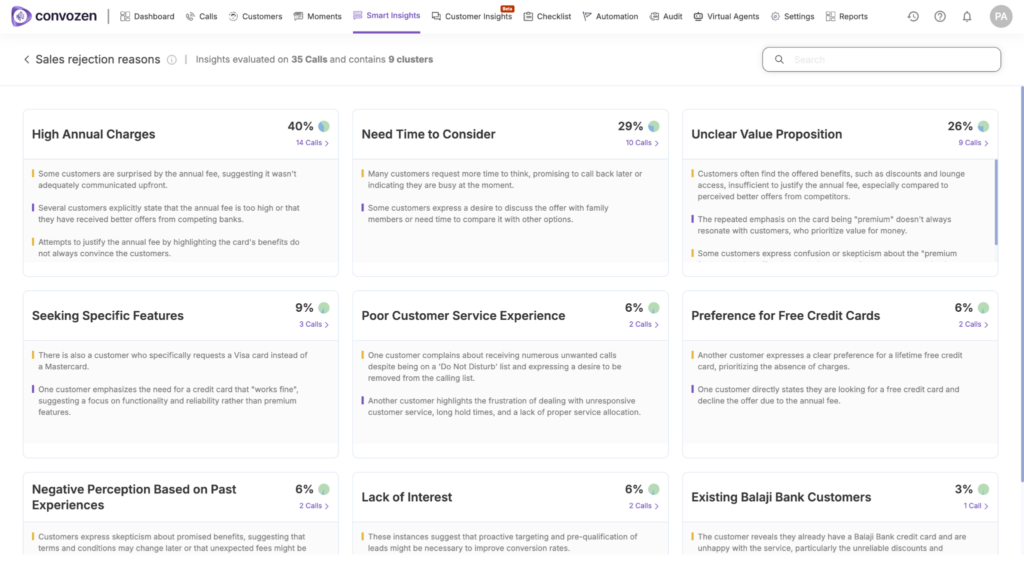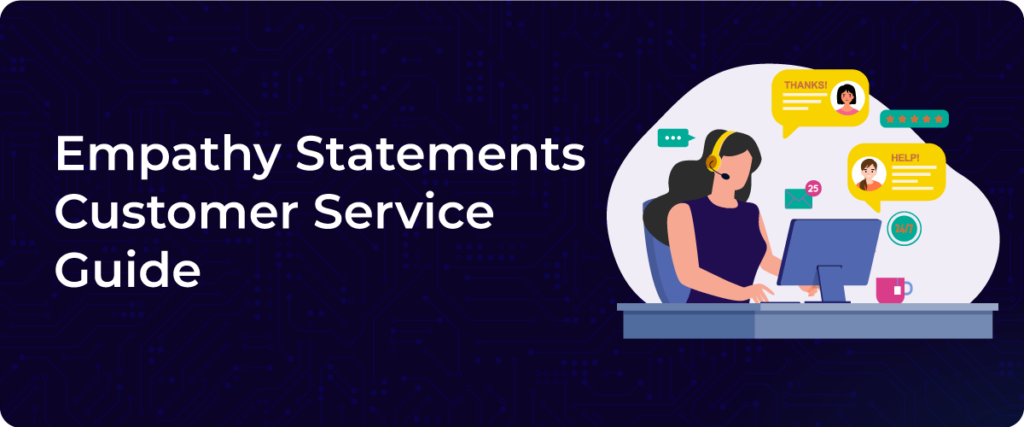Handling angry customers effectively can turn a negative experience into lasting loyalty. This guide walks you through 18 essential steps on how to handle an angry customer, how to manage a customer complaint, and related topics naturally.
18 Steps to deal with Angry Customers
Steps Overview:
| Step 1: Stay Calm and Composed |
| Step 2: Listen Actively and Let Them Vent |
| Step 3: Acknowledge Their Feelings and Apologize |
| Step 4: Ask Clarifying Questions and Confirm the Issue |
| Step 5: Avoid Defensive Language and Stay Positive |
| Step 6: Explain the Resolution Steps Clearly |
| Step 7: Offer Immediate Solutions or Alternatives |
| Step 8: Know When to Escalate the Issue |
| Step 9: Use Customer Data to Personalize the Response |
| Step 10: Maintain Professionalism and Manage Your Tone |
| Step 11: Document the Interaction for Records |
| Step 12: Follow Up to Ensure Satisfaction |
| Step 13: Train and Empower Your Team |
| Step 14: Learn from Customer Complaints |
| Step 15: Use Technology and Tools |
| Step 16: Set Clear Policies and Communicate Proactively |
| Step 17: What to Avoid When Handling Angry Customers |
| Step 18: Stay Positive and Solution-Oriented Throughout |
Step 1: Stay Calm and Composed
When facing an irate client or rude customers:
- Take deep breaths and stay composed.
- Don’t take customer anger personally.
- Respond politely without matching their tone.
- Maintain professionalism for effective conflict resolution.
Step 2: Listen Actively and Let Them Vent
- Allow customers to express their frustrations fully.
- Use active listening: nod, affirm, and maintain eye contact.
- Validate their feelings to build trust and reduce tension.
Step 3: Acknowledge Their Feelings and Apologize
- Show empathy by acknowledging emotions: “I understand why you’re upset.”
- Apologize sincerely, even if not at fault, to defuse anger.
Step 4: Ask Clarifying Questions and Confirm the Issue
- Ask open-ended questions to uncover the real problem.
- Paraphrase their concerns to confirm understanding and show you care.
Step 5: Avoid Defensive Language and Stay Positive
- Use solution-focused language; avoid blaming or negative words.
- Replace “Unfortunately” with “Here’s what we can do.”
Step 6: Explain the Resolution Steps Clearly
- Outline the steps you will take to resolve the complaint.
- Set clear, realistic expectations to prevent misunderstandings.
Step 7: Offer Immediate Solutions or Alternatives
- Offer refunds, replacements, or temporary fixes where appropriate.
- Present multiple options to empower the customer.
Step 8: Know When to Escalate the Issue
- Escalate promptly if the complaint requires specialized attention.
- Inform the customer about escalation clearly.
Step 9: Use Customer Data to Personalize the Response
- Reference past interactions to tailor the solution.
- Personalization builds rapport and trust.
Step 10: Maintain Professionalism and Manage Your Tone
- Speak calmly and clearly.
- A steady tone helps de-escalate even the most disgruntled customers.
Step 11: Document the Interaction for Records
- Keep detailed notes on complaints and measures taken.
- Useful for training and tracking repeat issues.
Step 12: Follow Up to Ensure Satisfaction
- Check in post-resolution to confirm the issue is resolved.
- Shows commitment and enhances customer loyalty.
Step 13: Train and Empower Your Team
- Provide ongoing training on handling difficult customers.
- Empower employees to make small decisions quickly.
Step 14: Learn from Customer Complaints
- Treat complaints as feedback for continuous improvement.
- Analyze trends to fix systemic issues.
Step 15: Use Technology and Tools
- Utilize CRM systems and automated ticketing to track complaints.
- AI chatbots can handle simple queries swiftly.
Step 16: Set Clear Policies and Communicate Proactively
- Make complaint procedures transparent and accessible.
- Helps manage customer expectations effectively.
Step 17: What to Avoid When Handling Angry Customers
- Don’t interrupt or argue.
- Avoid vague promises or deflecting responsibility.
- Never dismiss or minimize their concerns.
Step 18: Stay Positive and Solution-Oriented Throughout
- Keep customer experience central at all times.
- Turn complaints into opportunities for loyalty and improvement.
How to Handle Irate Customers — 5 Additional Steps
- Patiently allow customers to cool down.
- Use calm, assertive language to regain control.
- Focus on solving issues, not personalities.
- Offer real solutions over excuses.
- End unproductive conversations respectfully.
Why do Customers Get Angry?
Customers usually get angry when their expectations are not met. This could be due to delays, product defects, billing errors, or poor service in general. Lack of communication and feeling unheard just add fuel to the fire.
Sometimes, an angry customer is just frustrated by a lack of empathy or a robotic response. IVRs which only repeat messages and do not listen to consumers are very irritating. ConvoZen.AI’s Conversational IVR comes into play here which understands, responds, and sounds like a human.
Misunderstandings, unclear policies, or being passed between departments can also escalate their annoyance. At its core, an angry customer often feels disrespected, turning small issues into big frustrations.
Addressing these triggers must be the top priority in handling customer complaints effectively and preventing future dissatisfaction.
Read Also: Top 10 Customer Service Performance Review Phrases
Importance of Dealing Angry Customers
Believe it or not, an angry customer can be an asset. Why?
Their frustration is often rooted in unmet expectations, and their feedback gives you a direct insight into what is broken in your business.
Unlike silent customers who just walk away from your business without warning, angry customers care enough to voice their concerns. This gives you a golden opportunity to improve.
When you resolve their issues effectively, you can turn these difficult customers into loyal advocates for your business.
Studies from Harvard show that customers who experience excellent recovery from a bad situation are more likely to stick with your brand than those who never had an issue.
Angry customers also help you train your team to handle real-world scenarios, refining your complaint-handling processes. In short, every angry customer is a chance to learn, grow, and build trust.
How to Respond to Angry Customers- Templates and Examples
Handling customer complaints and an angry customer isn’t easy, but it’s a skill worth mastering. Here are 5 templates to help you respond effectively:
1. Acknowledge and Empathize
Template:
“Hi [Customer Name], I’m really sorry you had such an experience. I completely understand your frustration, and I would feel the same way. Let me see how I can resolve this for you.”
Example:
“Hi Anju, I’m really sorry to hear about the delay with your order. I totally understand how frustrating that must be, and I would feel the same way. Let me check on this and make sure we fix it as soon as possible.”
2. Take Responsibility and Apologize
Template:
“I apologize for the inconvenience this has caused. While this isn’t typical, I take full responsibility for the mistake. Let’s work together to resolve this.”
Example:
“I apologize for the mix-up with your billing, Sarah. I take full responsibility for this error. Let’s get this sorted out right now so you can have the experience you expected.”
3. Provide a Solution
Template:
“Here’s what I can do to fix this: [Solution]. I’m committed to resolving this as quickly as possible.”
Example:
“Here’s what I can do to fix this: I can offer a replacement or refund. I’ll personally ensure the process is smooth and fast for you.”
4. Offer a Compromise or Extra Benefit
Template:
“As a gesture of goodwill, I’d like to offer you [Compensation]. I hope this helps make up for the inconvenience caused.”
Example:
“As a gesture of goodwill, I’d like to offer you a 10% discount on your next purchase. I truly appreciate your patience and understanding.”
5. End on a Positive Note
Template:
“Thank you for bringing this to my attention. I value your feedback and will do my best to ensure this doesn’t happen again.”
Example:
“Thanks for reaching out, Ravi. Your feedback helps us improve, and I’ll make sure to address this issue with the team to prevent it in the future.”
By acknowledging the issue, taking responsibility, offering solutions, and ending with a positive note, you can turn an angry customer into a loyal one!
Turn tough conversations into positive outcomes!
Read Also: Empathy Statements for Customer Service
Leverage AI Tools to Handle an Upset Customer- Convozen
ConvoZen.AI is your secret weapon when it comes to turning an angry customer into a loyal advocate. By leveraging its powerful AI-driven tools, it helps businesses respond to complaints efficiently and empathetically. Here’s how it works:
1. Instant Analysis with Conversational Analytics
ConvoZen.AI’s conversational analytics quickly identify customer sentiment during interactions. This allows agents to recognize red-hot rage early and respond with the right tone and solution. No more guessing how frustrated a customer might be!
2. Personalized Coaching for Agents
With real-time performance insights, ConvoZen.AI provides agents with personalized call center coaching to handle difficult customer situations better. This ensures that each customer is treated with empathy and professionalism, transforming frustration into understanding.
3. Compliance and Accuracy
Angry customers often feel unheard or misinformed. ConvoZen.AI helps agents stay compliant with all regulations, ensuring they’re providing accurate information and reducing the risk of further frustration.
Explore more about Compliance and Audit here
4. Optimized Responses with AI Virtual Agents
ConvoZen.AI’s AI virtual agents can step in to handle basic queries or provide quick solutions to common complaints. This reduces wait times and gives customers the instant gratification they crave, helping to cool down even the most irate individuals.
5. Smart Insights and Consumer Feedback
ConvoZen.AI can provide insights on calls done and cluster them to find a trend and understand the reason behind customer rejections, and anger and provides feedback compilated which businesses can take action upon.

By analyzing, coaching, and providing the right tools, ConvoZen.AI ensures that your agents are always ready to take difficult customers from red-hot rage to golden praise. It’s all about making those tough conversations turn into lasting relationships.
Wrapping it up
The future of customer service isn’t just about fixing problems—it’s about preventing them. With AI-powered solutions like ConvoZen.AI, businesses can anticipate issues, personalize interactions, and turn even the most frustrated customers into long-term advocates.
As technology advances, companies that embrace data-driven insights and empathetic communication will lead the way in customer satisfaction. The goal isn’t just damage control—it’s building relationships that last.
Whether through smarter automation, better agent training, or proactive issue resolution, the future of handling customer complaints and angry customers lies in innovation, not just reaction.
The real question is: are you ready to evolve with it?
Frequently Asked Questions (FAQs)
Stay calm, listen actively, empathize sincerely, clarify the issue, and offer clear solutions promptly.
Listen patiently, acknowledge feelings, apologize sincerely, and provide practical solutions quickly.
Keep calm, validate feelings, avoid defensiveness, clarify concerns, and offer effective resolutions.
Listen carefully, empathize, apologize, clarify issues, propose solutions, and follow up.
Actively listen, validate concerns, analyze issues, offer solutions, and document interactions well.
Stay patient, listen without interruption, avoid arguments, and focus on resolving issues.
Maintain composure, avoid personalizing insults, respond politely, and focus on solutions.
Show empathy, acknowledge frustration, clarify issues, apologize, and provide timely solutions.


